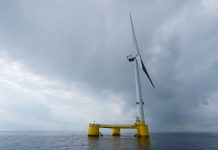A year since the UK’s last major blackout, National Grid ESO is urging small generators to complete work so that they are less prone to self disconnecting during frequency deviations.
The ESO is also reminding small generator operators that they can secure £5,000 towards the cost of upgrades – which could help prevent future blackouts and lower system costs.
Failure to make the required changes by May 2022 risks compliance action and fines.
Disturbance in the force
Last August, lighting strikes sparked a chain reaction where two generators, Ørsted’s Horsea offshore wind farm and RWE’s Little Barford gas-fired power station came offline almost instantaneously. The problem was exacerbated as small generators also tripped to protect themselves from damage from low frequency – instead of supporting the system. The result was that the ESO couldn’t bring frequency under control and had to instruct distribution network operators to disconnect demand.
Rule changes
Rules around loss of mains protection state that vector shift protection systems can no longer be used by small generators. Systems must be changed to Rate of Change of Frequency (RoCoF) protection. Meanwhile, RoCoF protection requirements have been changed from 0.125 Hz/s to 1 Hz/s with a definite time delay of 500 milliseconds, buying time and improving resilience during frequency deviations.
Incentives
Following the August incident, the ESO and distribution network operators launched an Accelerated Loss of Mains Change Programme (ALoMCP), and in June this year made available the additional £5,000 via a fast track process.
The latest round of funding applications opened this week. The ESO said it is “keen to hear from generation site owners” where capacity is between 500kW to 4.999MW.
See full details and apply via the ENA’s registration portal.
G59-G99: Do it now
“One of the main reasons the ENA G59 export and mains paralleling process was updated under a EU directive to G99 was to protect the transmission and distribution system against loss of system inertia that is inevitable as countries move from large thermal generation to renewable generation,” says Steven Cook, of G99 Professional Services.
“The new G99 process ensures all new export generation are able to ‘ride through’ such loss of system inertia events as the UK experienced last August. However it does not cover existing export generation systems as was witnessed when over 1GW of distributed generation tripped off on low frequency instead of supporting the system.”
According to Cook, there are approximately 50,000 generation sites (mainly distributed generation such as PV, wind turbines, diesel generation), with a total capacity of 15GW that do not comply with the latest Loss Of Mains protection standards required under G99.
As the company’s name implies, says Cook, it has significant experience in G99 testing and commissioning.
“We strongly recommend owners comply with the Grid Code and to take advantage of the payment scheme,” says Cook. “It means they avoid the risk of having action being taken against them for non-compliance as well ensuring that in the event of such a system issue their assets will continue to generate, as opposed to tripping off.”



